Key takeaways
- Understanding the balance of fruit, sugar, and pectin is essential for successful jam-making.
- Proper equipment, such as a heavy-bottomed pot and airtight canning jars, greatly enhances the process and outcomes.
- Patience is key in both cooking and jar sealing to avoid common mistakes, leading to better shelf-life and taste.
- Experimentation with different fruits and staying attentive during the cooking process can improve the final product’s consistency.
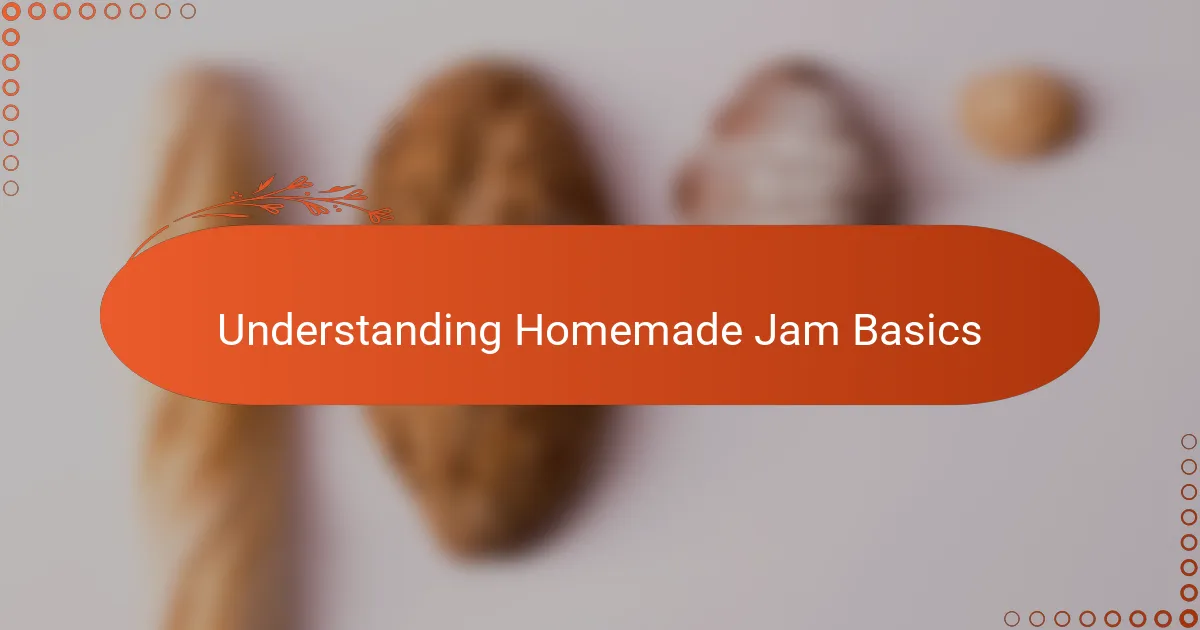
Understanding Homemade Jam Basics
When I first started making jam at home, I quickly realized that understanding the basics was crucial to avoid turning my fruit into a sticky mess. Jam-making is really about balancing fruit, sugar, and pectin—the natural thickener—to get that perfect spreadable texture. Have you ever wondered why some jams set beautifully while others stay runny? For me, learning to recognize the right moment to stop cooking made all the difference.
One thing I found particularly fascinating is how sugar not only sweetens but also acts as a preservative, helping the jam last longer without refrigeration. I remember my first batch; I was worried about using too much sugar, but it really does play a vital role in both taste and shelf-life. It made me appreciate the chemistry behind this simple kitchen craft.
Ultimately, homemade jam is about patience and observation. Watching the bubbles change during cooking told me when the jam was ready, something no recipe alone could teach. Do you catch these little signs when cooking? Once you do, you gain a new confidence in your ability to create something truly homemade and delicious.
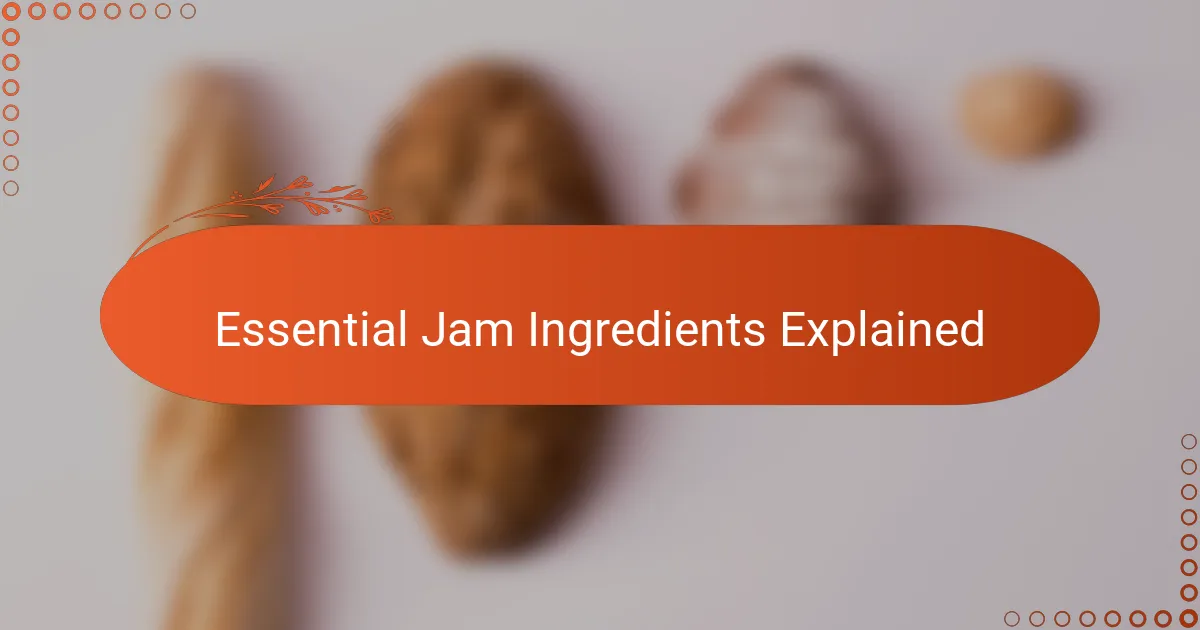
Essential Jam Ingredients Explained
When I first gathered my ingredients, I was honestly surprised by how few items are truly essential for jam-making. Fruit, sugar, and pectin stood out as the core trio, each playing a unique role. Have you ever wondered what makes fruit turn into that luscious, spreadable delight? For me, understanding that pectin—the natural thickener in fruit—needs a little help from sugar and sometimes added pectin powder was a game-changer.
Sugar, beyond its sweetening role, fascinated me because it acts as a preservative, extending the life of homemade jams without relying on refrigeration. I used to be cautious about using too much sugar, fearing overly sweet results. But learning about its dual purpose gave me peace of mind and a better appreciation for the balance needed.
Sometimes, I experimented with different fruits and noticed that not all contain enough natural pectin to set properly. That’s when adding commercial pectin became a useful trick in my jam-making toolkit. Have you tried tweaking ingredients to get the perfect consistency? It’s through these little adjustments that I truly felt the art of canning come alive.
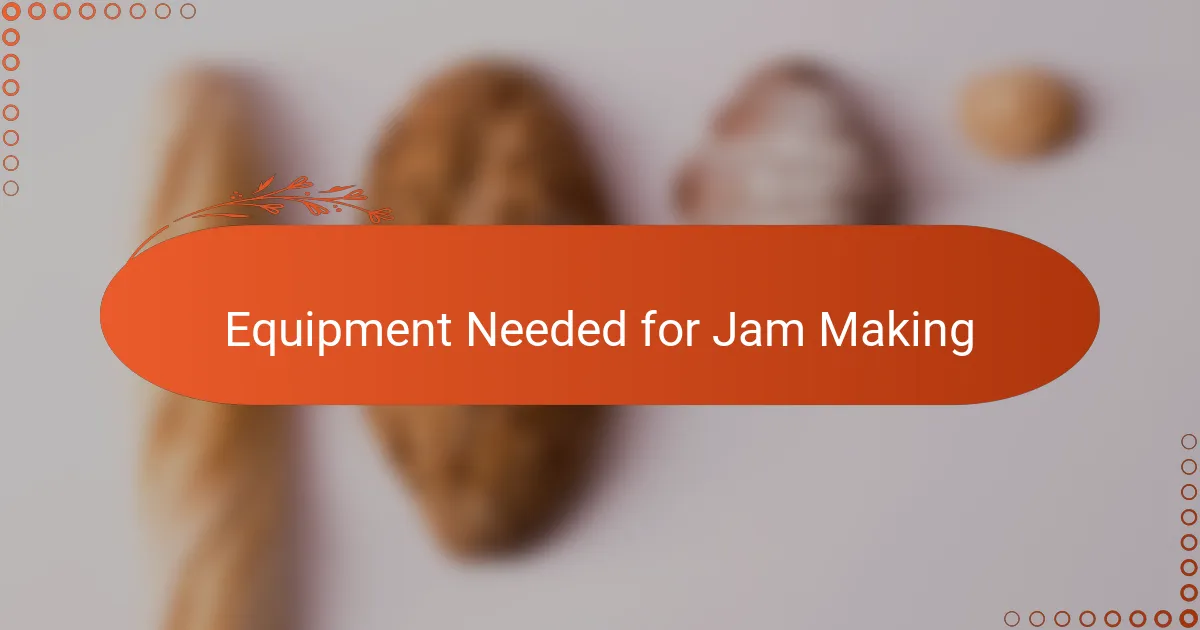
Equipment Needed for Jam Making
Having the right equipment made my jam-making journey so much smoother than I expected. A sturdy, heavy-bottomed pot was my first investment—it helps distribute heat evenly and prevents scorching, which I quickly learned can ruin a batch. Have you ever noticed how a burnt taste sneaks into your jam when the heat isn’t controlled? That pot saved me from that disappointment more times than I can count.
Next, I found that a good ladle and a wide-mouth funnel were indispensable for transferring the hot jam into jars without making a mess. I remember my first attempt, where jam splattered everywhere—I quickly realized that these simple tools save not only time but also a sticky cleanup afterward. Doesn’t it feel great when your kitchen stays cleaner during these messy projects?
Lastly, having a reliable canning jar set with airtight lids gave me confidence that my jams would store safely and last through the seasons. Sealing jars properly was intimidating at first, but once I mastered it, it felt like I’d unlocked a little homesteading superpower. Have you tried canning jars that just won’t seal? It’s frustrating, but now I know the right equipment prevents that heartache.
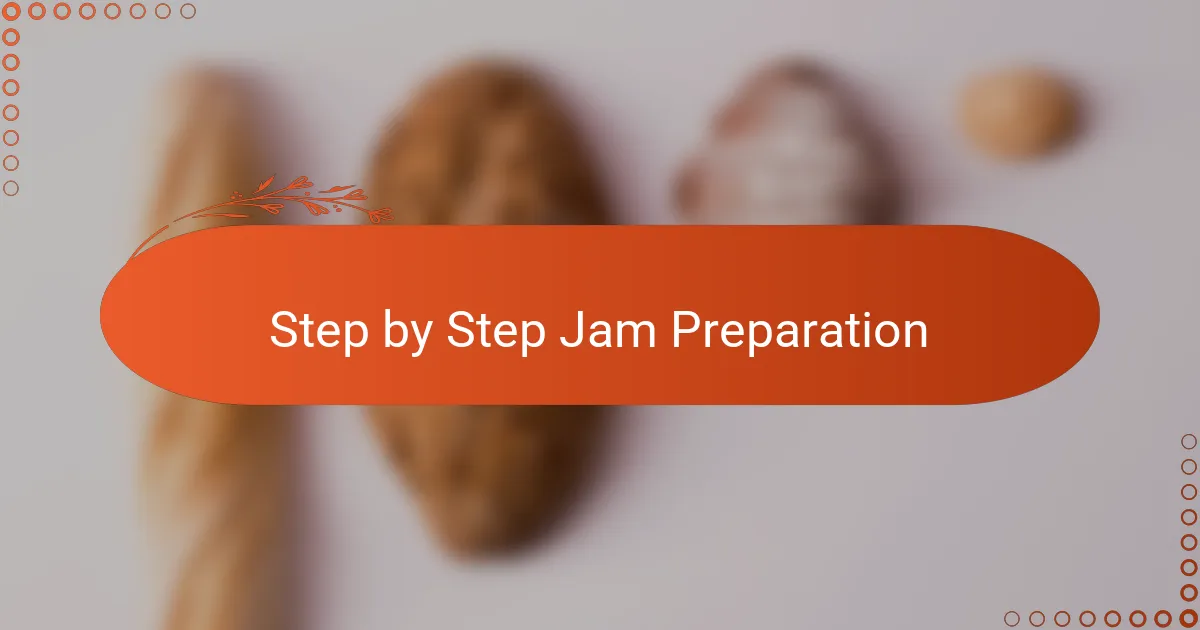
Step by Step Jam Preparation
The very first step I took was washing and preparing the fruit—removing stems, pits, or bruised parts felt like setting the stage for success. Have you noticed how handling fruit with care early on makes the final jam taste fresher and brighter? That small attention to detail gave me confidence that the effort would pay off.
Next came cooking the fruit with sugar and pectin, stirring patiently as the mixture bubbled away. I remember how I learned to watch for that telltale sheet-like thickness when dripping from the spoon; it was like a secret signal that the jam was ready to be jarred. Have you ever stood over the pot, waiting for that perfect consistency? I found it both nerve-wracking and exhilarating.
Finally, filling the sterilized jars felt like sealing in months of flavor and effort. I admit, those first careful ladlefuls were a little nerve-wracking—I kept thinking, “What if it doesn’t seal right?” But once the jars clicked and sealed, that feeling of accomplishment was incredible. Have you experienced that mix of relief and pride when your jars are safely sealed, knowing you’ve captured a bit of summer for the colder months?
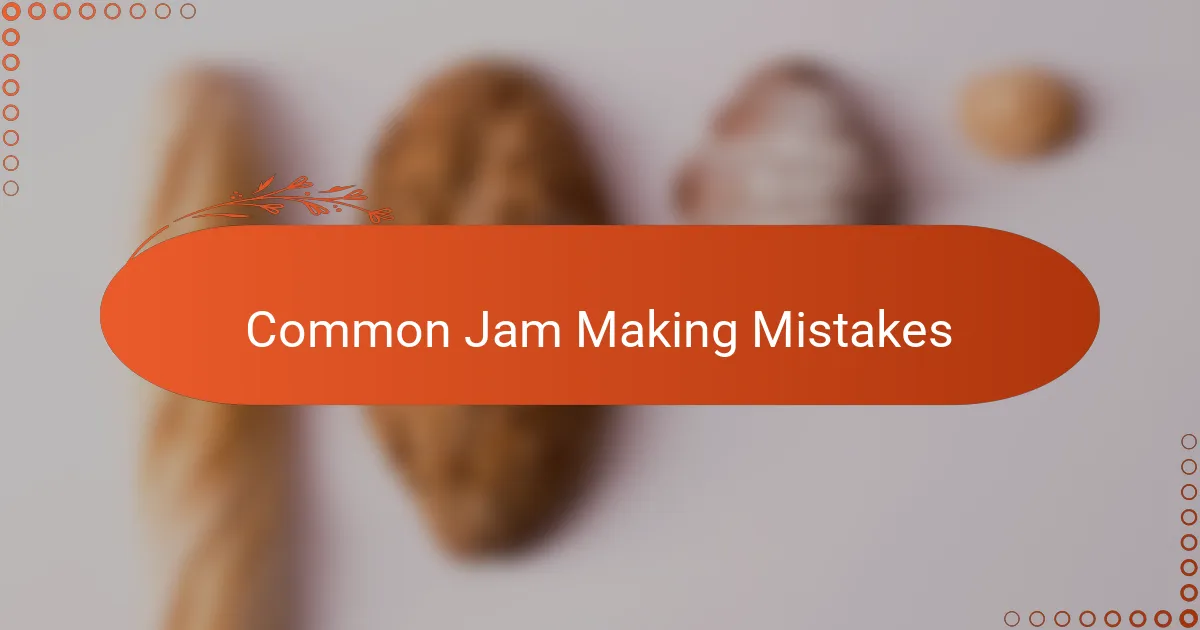
Common Jam Making Mistakes
One mistake I made early on was rushing the cooking process. I thought the jam would set faster if I turned up the heat, but that only led to scorching and a bitter taste. Have you ever been tempted to speed things up, only to end up with a batch that’s more burnt than sweet? Learning to maintain a gentle simmer changed everything for me.
Another common pitfall is ignoring the importance of sterilizing jars properly. I once thought a quick rinse was enough, but a jar that isn’t sterile can cause the jam to spoil quickly. I still remember opening a spoiled jar and feeling that sinking disappointment — it made me realize that patience and hygiene are just as vital as good ingredients.
Lastly, I struggled with measuring sugar accurately. Trying to cut down on sugar to make my jam healthier sounded like a great idea, but it often resulted in jams that wouldn’t set. Have you ever faced that dilemma between taste and texture? I found that sticking to the recipe’s sugar amount not only improved the consistency but also extended the shelf life, so it was worth it in the end.
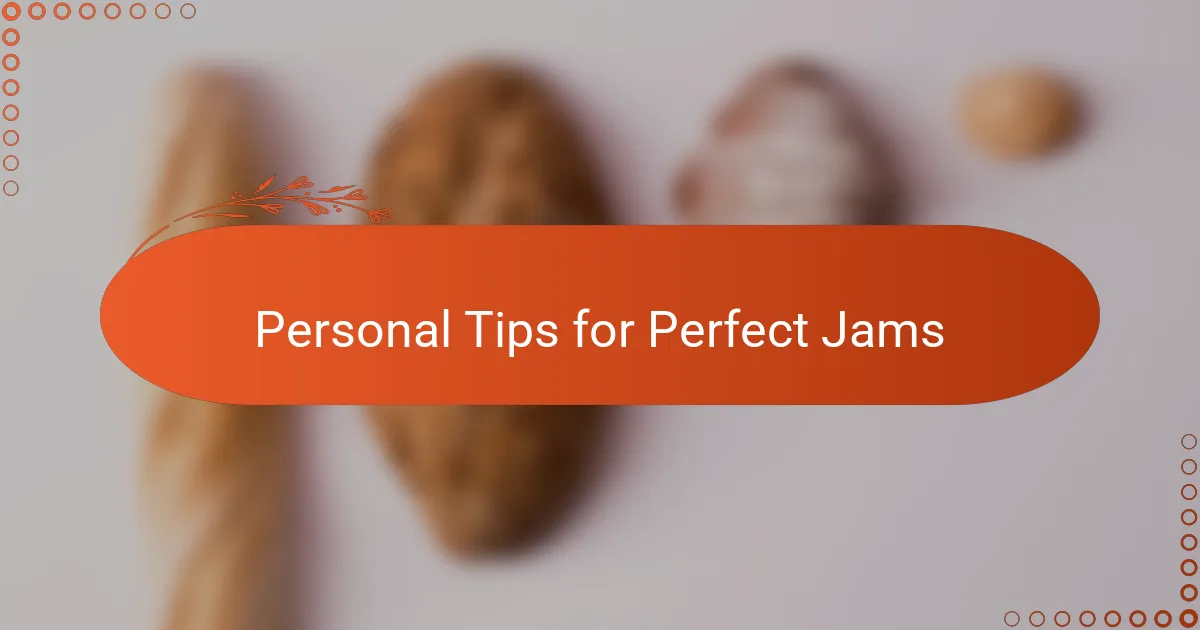
Personal Tips for Perfect Jams
One tip I swear by is testing the jam’s set by placing a small spoonful on a chilled plate. If it gels after a minute, you’re good to go; if not, it needs a bit more cooking. Have you tried this simple trick? It saved me so many times from jars of runny jam.
I also learned to resist the urge to over-stir once the jam starts bubbling vigorously. Over-mixing can break down the fruit and alter the texture, which was a surprise to me at first. Do you find it hard to just watch and wait? I used to, but patience really pays off in the final taste and consistency.
Finally, I keep a close eye on timing when sealing jars after filling them. Leaving jam to cool too long before processing in the water bath can affect the seal and shelf life. At first, I underestimated this step and paid for it with some spoiled jars. Have you ever felt that frustration? Now, I’m much more precise, and it’s made all the difference in my pantry.
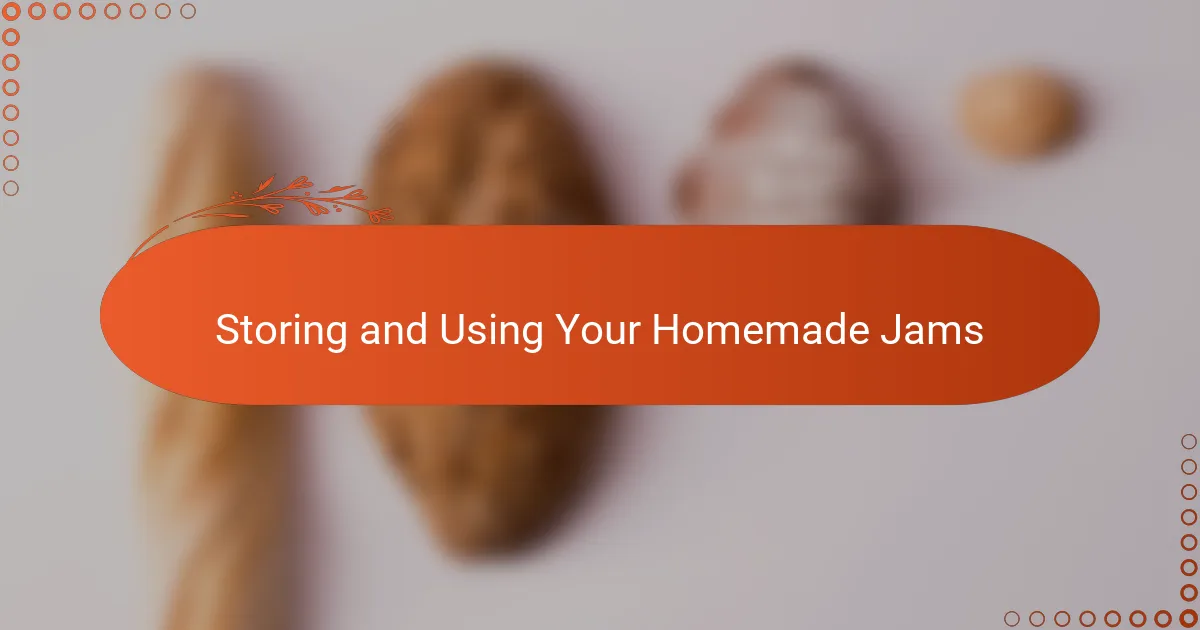
Storing and Using Your Homemade Jams
Storing homemade jams taught me how critical airtight sealing really is. I remember one batch that I thought was perfectly canned, only to find mold days later because a lid hadn’t sealed correctly. Have you ever opened a jar with that faint, off smell? It’s heartbreaking, but it pushed me to double-check each jar’s seal before storing.
Once the jars are properly sealed, I find keeping them in a cool, dark place extends their shelf life beautifully. My pantry works great—no fancy fridge needed. Have you noticed how sunlight or warmth can change the flavor or color of jams over time? That subtle shift made me appreciate simple storage conditions more than I expected.
Using homemade jam is a joy that goes beyond toast. I love stirring spoonfuls into yogurt or dolloping on warm biscuits. Do you tend to save it for special occasions or use it every day? For me, spreading that homemade goodness throughout the week keeps the taste of summer alive a little longer.



